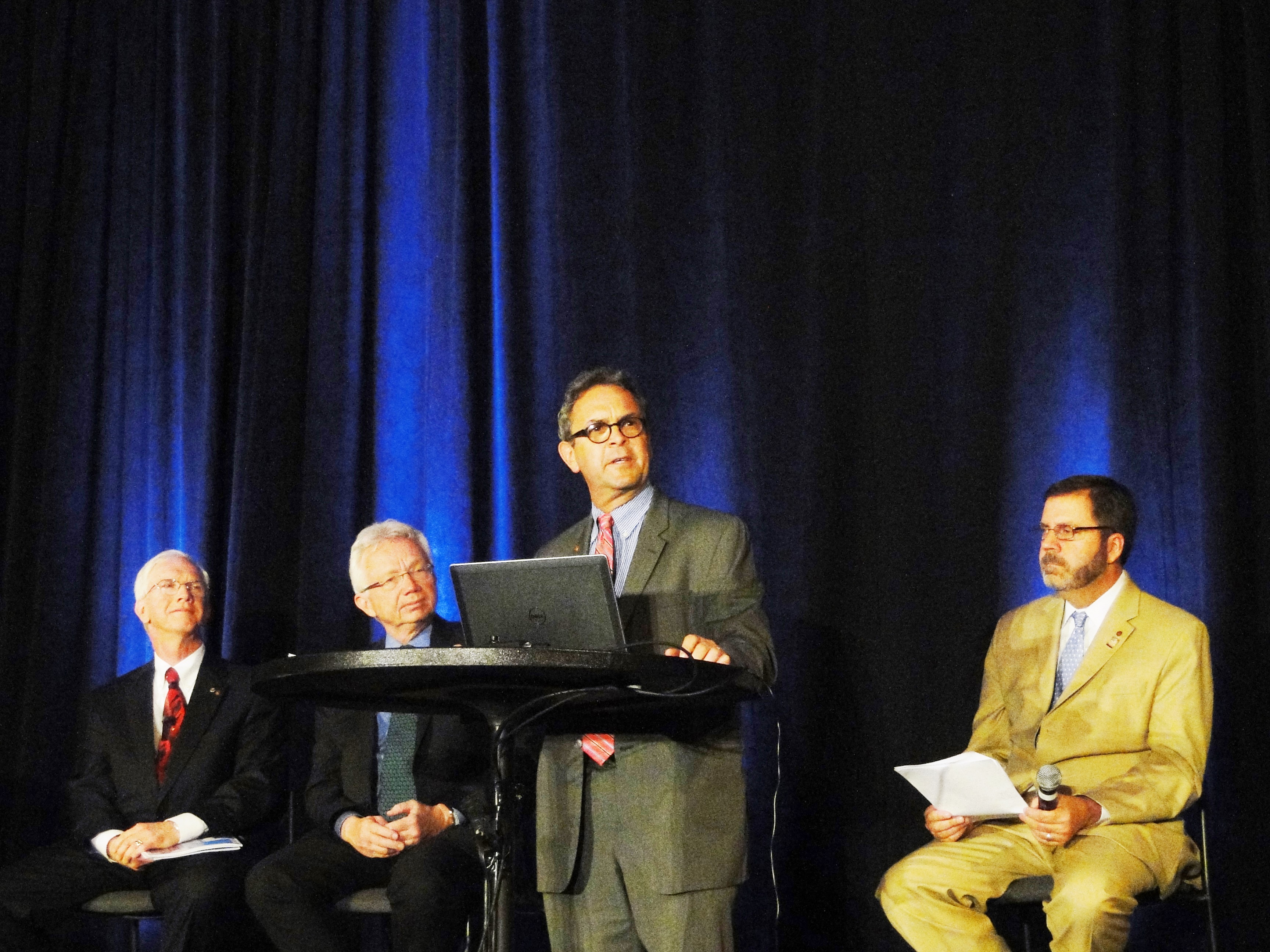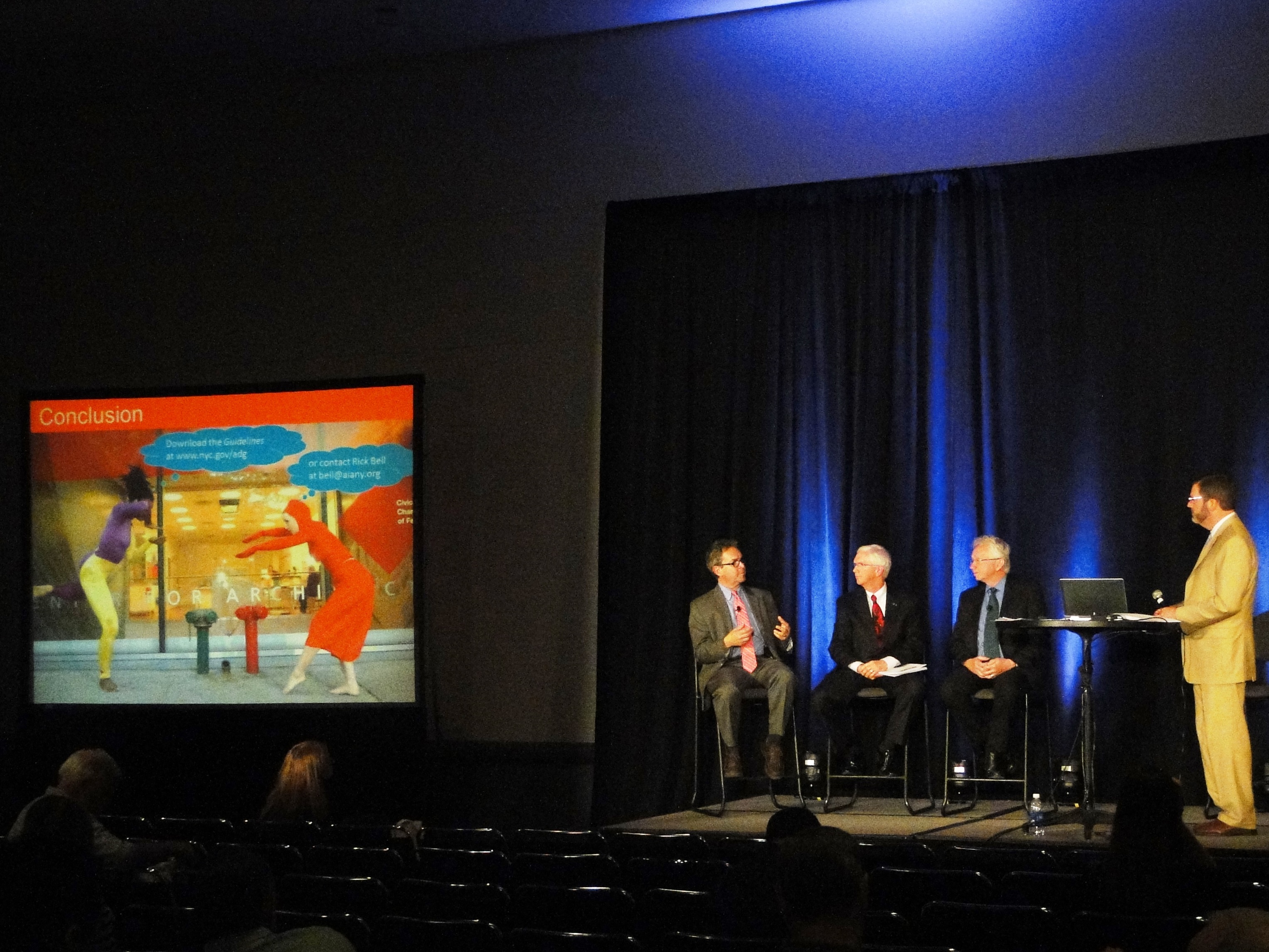by: Matt Shoor AIA LEED AP
The United States is facing a crisis of historic proportions. Thanks to decades of dependence on the automobile for transportation, our population is overweight and physically unfit. Although this predicament has received extensive media coverage, certain facts are still staggering. For instance, according to a 2005 study in the New England Journal of Medicine, the present generation of American children can anticipate a life expectancy five years shorter than their parents. Thus, for the first time in 200 years, life expectancy in the U.S. is on the decline.
But architects and other design professionals can be a part of the solution. As Dr. Richard Jackson, Hon. AIA., suggested during the “Designing the Built Environment for Global Health” panel, while architects don’t (usually) wear white coats, they should think of themselves as health professionals. AIANY Executive Director Rick Bell, FAIA, was on the panel as well, with Ray Pentecost III, DrPH, FAIA, ACHA, LEED AP, and moderator Russell Davidson, AIA.
Rising healthcare costs compound the problem of an overweight citizenry. As Davidson stated in his introduction to the panel, federal auditors estimate that spending on healthcare will constitute 20% of America’s GDP by 2020. Moreover, according to Pentecost, many analysts fear that the increase of this figure to 25% of GDP could substantially destabilize the U.S. economy. Pentecost cited other statistics that are equally astonishing. Diseases of lifestyle (obesity, diabetes, etc.) cost the U.S. $1 billion per day. Also, cardio-respiratory fitness (or, really, the lack thereof) is the primary cause of death in the U.S.
While this data is disturbing, the silver lining is that architects have the opportunity to dramatically improve public health by working with clients to design spaces that promote physical engagement. Dr. Jackson stated that healthcare professionals have been begging the design community for years to devise buildings and public places that force users to be active and mobile.
Bell posited that design strategies encouraging physical activity are actually very straightforward and commonsense. He used the example of Times Square to illustrate his point. Because the city has made it drastically more difficult to drive around through pedestrian plazas and amenities, it has become a desirable pedestrian zone and contributor to active recreation. Urban planners and architects understood that auto activity was incompatible with daily (and helpful) human mobility, and demoted the car accordingly.
Promoting physical fitness in individual buildings can also be as straightforward as engaging stair design. Bell cited the much-used fire stair in Renzo Piano, Hon. FAIA, and FXFOWLE’s New York Times building, which is beautiful and more convenient than the building’s elevators. In other instances, cooperation from sympathetic code officials is necessary. This is the case at the Center for Architecture, where a code exception allows the fire stair doors to remain open at all times. Bell indicated that architects must learn from and employ such precedents when considering the physical activity of building users.
In a world where the interconnected web of human life impacts each and every one of us, designers can no longer afford to assume passivity with regard to public health. One of Dr. Jackson’s abiding aphorisms is: “All people who can design are health leaders.” It is paramount that the architectural community adopt his credo, and that we demand and implement spaces that promote physical activity and human health. Doing so will improve the lives of all Americans, and will assist in maintaining a stable and balanced U.S. economy.
Matt Shoor, AIA, NCARB, LEED AP BD+C, is an architect, writer, and educator currently employed by Macrae-Gibson Architects. He is a frequent contributor to e-Oculus, and can be reached at mshoor@gmail.com.
Event: 2013 AIA Convention: Designing the Built Environment for Global Health
Location: Colorado Convention Center, Denver, 06.20.13
Speakers: Richard J. Jackson, MD, MPH, Professor and Chair, University of California, Los Angeles, School of Public Health; Ray Pentecost III, DrPH, FAIA, ACHA, LEED AP, President, Design and Health, LLC; Rick Bell, FAIA, AIANY Executive Director
Moderator: Russell A. Davidson, AIA, President and Managing Partner, KG & D Architects and Engineers










